Near Tokyo Skytree and Sensoji Temple! 6 Public Baths in Asakusa

This article features six bathhouses, all within walking distance from Tokyo Skytree or Sensoji Temple. The list includes Mikoku-yu, which boasts a view of Tokyo Skytree, and Daikoku-yu, where visitors can enjoy a spacious open-air bath. There are also hotels with hot spring facilities in the area.
Visit a Public Bath after Sightseeing in Asakusa
In Japan, citizens have loved public bathhouses, or sento, since long ago. Visitors can enjoy a taste of Japanese culture at public baths, including admiring murals of Mt. Fuji.
Sensoji Temple and Tokyo Skytree, both famous sightseeing spots, are located in Asakusa, where many popular bathhouses dot the area. This article features six bathing spots, including Mikoku-yu and Daikoku-yu, within walking distance from Sensoji Temple and Tokyo Skytree.
1. Mikoku-yu: A View of the Tokyo Skytree
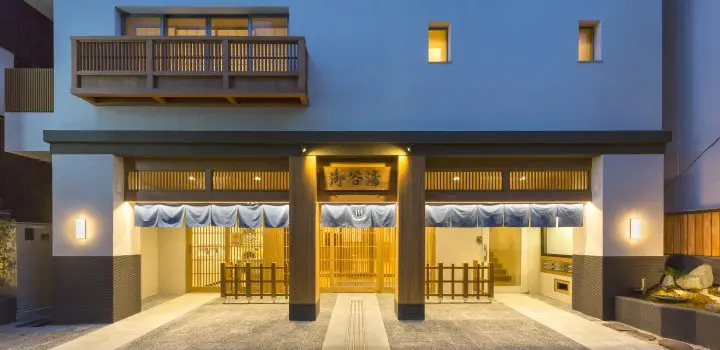
Picture courtesy of Mikoku-yu
This facility, located 20 minutes on foot from Tokyo Skytree, is known for its view of the iconic landmark from the open-air bath.
Mikoku-yu is housed inside a building, with the reception and lounge on the first floor. The bathing rooms are found on the fourth and fifth floors.
In fact, the two floors are completely different. For example, the fourth floor is designed in the image of a cavern and the fifth floor is spacious with a high ceiling. The floors are also separated by gender, so the fifth floor is available to women while men use the fourth floor. This changes every week, so visitors who could not bathe on their preferred floors should try another time.
The beautiful facility was renovated in 2015. Visitors can enjoy the Japanese aesthetic in various places, such as the tiny garden by the bathing room, the mural of Mt. Fuji, the entrance, and the dressing room, which are both covered in wooden panels.
Mikoku-yu also offers its services to senior citizens and people with disabilities. The whole facility follows barrier-free standards, so the bathtubs are low in height to ensure those who have difficulty walking will have a relaxing experience.
The Sprawling Fifth Floor

Picture courtesy of Mikoku-yu
The bathing room on the fifth floor is spacious with a high ceiling. "Reflection of Mt. Fuji in Lake Kawaguchi," one of the works from the Thirty-Six Views of Mt. Fuji series by Katsushika Hokusai (*1), is painted on the wall.
The Tokyo Skytree is visible from the windows of the semi-open-air bath. Enjoying the scenery while bathing is one of the appeals of visiting Mikoku-yu.
*1: A woodblock print artist from the late Edo Period.
The Relaxing Fourth Floor

Picture courtesy of Mikoku-yu
The fourth floor is designed in the image of a cavern, with the subdued lighting in the bathing room creating a calming ambiance.
Located on the fourth floor, the fukan-on onsen (hot spring) is set at the same degrees as their body temperature. No wonder many visitors tend to take their time bathing in this tub.
Bath of the Day
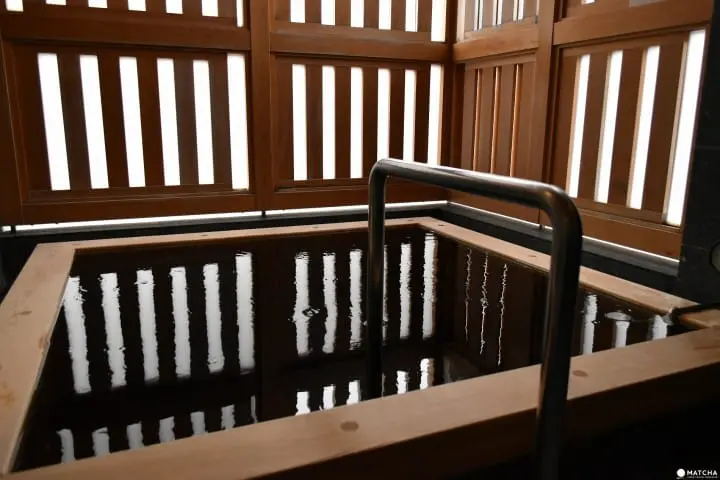
The kusuri-yu (medicinal bath), located on the fourth and fifth floors, changes daily. On days featuring herbal baths, the room is filled with a relaxing aroma of herb tea.
Seasonal fruits are also used for the kusuri-yu, so visitors can have fun imagining what the next ingredients will be.
Some of the bathtubs are filled with kuro-yu (black water), a crude hot spring. Said to have a skin-beautifying effect, it is popular among guests.
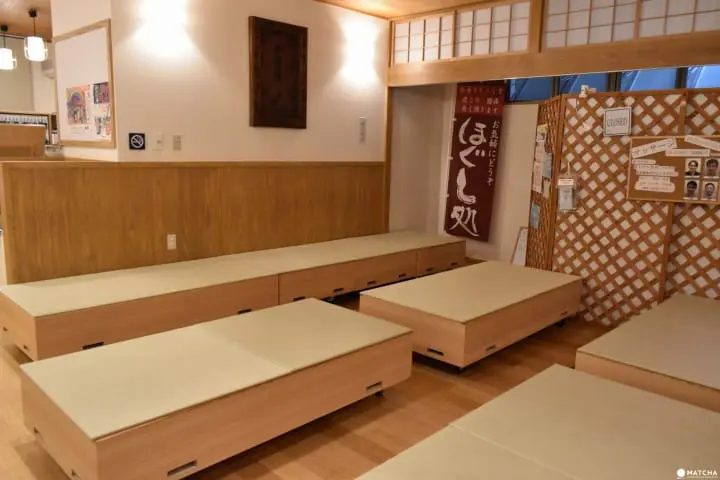
Mikoku-yu hands out guidelines to visitors written in English, Chinese, Korean, and Japanese, so first-time visitors need not to worry.
This publuc bath welcomes visitors with tattoos. Services such as the tebura set (bathing kit, 200 yen after tax), rental towels (30 yen after tax), and bath towels (80 yen after tax) are also available.
The tebura set includes a towel, toothbrush, razor, and nylon washcloth. Liquid soaps and shampoos are available for free.
Hotels near Mikokuyu
2. Daikoku-yu: A 10-Minute Walk from Tokyo Skytree
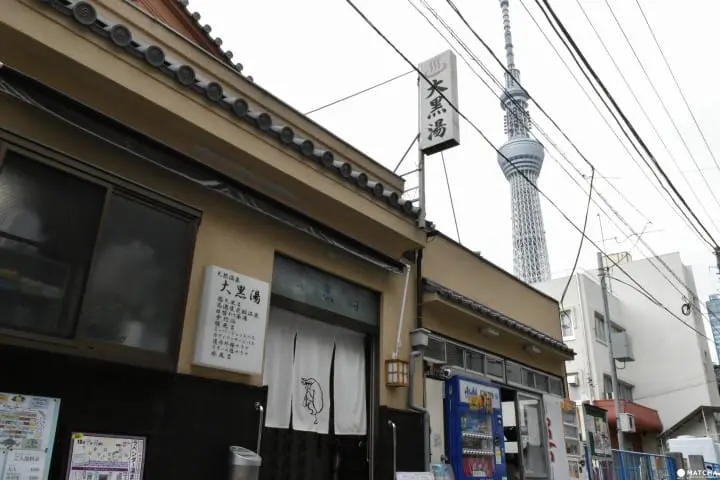
This public bath, located ten minutes away from Tokyo Skytree, opened in 1950. It was renovated in 2014, adding facilities such as a spacious open-air bath, wooden porch, and carbonated onsen. Daikoku-yu is adored by regular customers of all ages.
The ceiling of the dressing room, along with the exterior, is preserved in the original style, retaining the aura of the good old days.
The Mineral-Rich Open-Air Bath
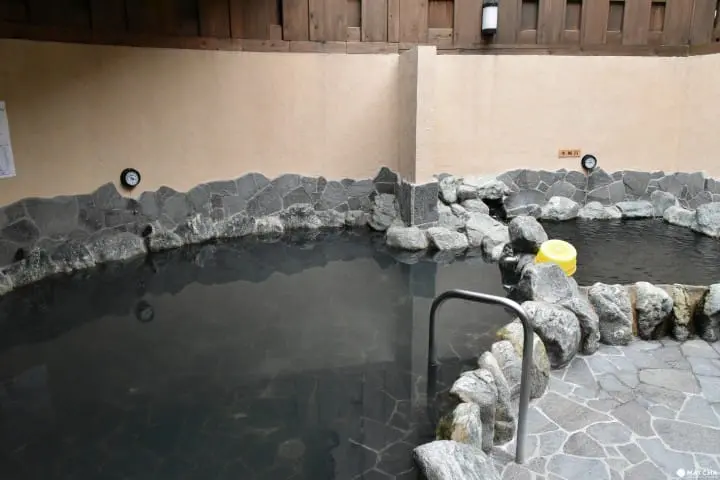
Daikoku-yu has two bathing areas: an open-air bath with a salt sauna and a carbonated onsen. They are separated by gender. Both areas are furnished with their own washing space.
A highly dense liquid produced by Le Furo is added to the open-air bath. The liquid contains more than 70 types of minerals. It is said to be effective for replenishing various minerals, raising body temperature, and strengthening the immune system. This one-of-a-kind bath was planned as a modern-day tohji (*2) at this public bath.
Visitors can also enjoy the salt sauna, which requires an additional fee of 200 yen after tax, and hoko-buro (*3). The open-air bath is spacious with a view of the sky.
*2: Medicinal treatment by bathing. Balneotherapy.
*3: A deep bathtub where bathers can exercise in the water.
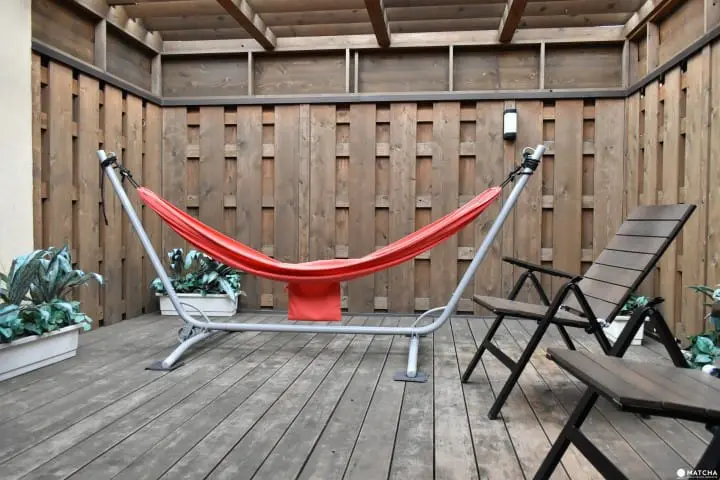
There are chairs and hammocks on the wooden porch. Visitors are invited to cool down after bathing while looking up at the Tokyo Skytree.
Be sure to visit this public bath at night when Tokyo Skytree is illuminated. The view is completely different from the daytime.
High-Density Carbonated Bath: For Those Who Want to Bathe Leisurely
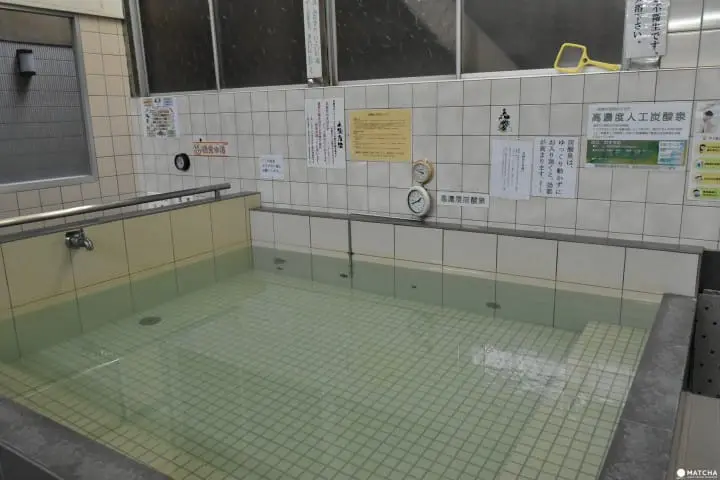
A high-density carbonated bath is available in the other area.
The water is heavily infused with carbon dioxide, which helps blood circulation and keeps the skin cleansed.
Compared to other bathhouses, the tub is larger at Daikoku-yu. The temperature is set low at 38 degrees Celsius, making it perfect for those who prefer long baths.
Just like Mikoku-yu, kusuri-yu is available in both washing areas. All the bathtubs are filled with natural spring water, which is said to be effective in beautifying the skin.
Multilingual Services

Since the official website of Daikoku-yu has pages translated into English and French, many overseas visitors frequent this facility.
The fares are also written in English, and English pamphlets on Japanese bathing manners are handed out.
There is a towel rental service (50 yen after tax) with free shampoo and liquid soap, so even tourists can drop by casually.
People with tattoos can also bathe at Daikoku-yu. It is open all night and closes at 10:00 in the morning. This facility is the first public bath in the Tokyo metropolitan area to start this service. It is perfect for those looking to enjoy a late-night or early-morning bath.
Other Recommended Bathhouses
In addition to Mikoku-yu and Daikoku-yu, there are two other bathhouses in the area.
3. Tsuruno-yu
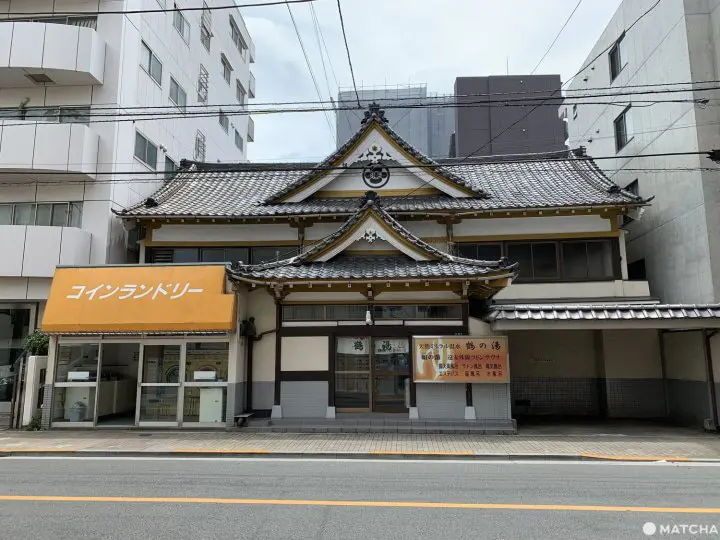
This sento is a 12-minute walk from Asakusa Station along the Tsukuba Express Line. It has been in business since 1928.
In addition to kusuri-yu (medicinal bath), the "kinu no yu" (silk bath) employs water infused with ultra-fine bubbles, which is effective for gout and arthralgia.
4. Akebono-yu
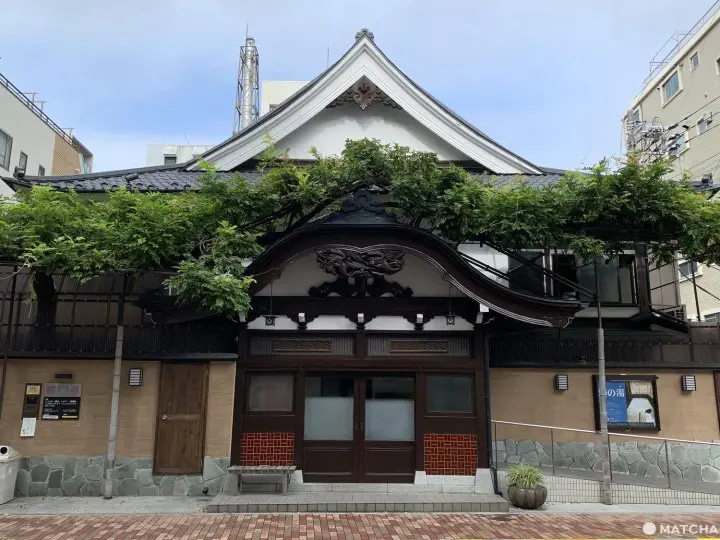
This facility is a 15-minute walk from Asakusa Station along the Tokyo Metro Ginza Line. The stunning exterior is reminiscent of a shrine or temple. Visitors can also enjoy the beautiful wisteria by the entrance, which blooms from late April to early May.
Hotels with Hot Springs
There are hotels in Asakusa that either feature an onsen or a large bath. Those who wish to go straight to bed after bathing should take a look.
5. On'yado Nono Asakusa
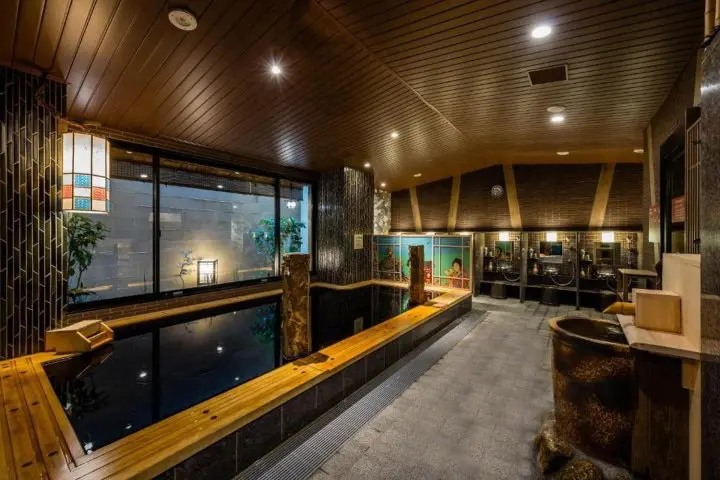
Picture courtesy of Booking.com
This hotel is located near Hanayashiki, a popular amusement park in Asakusa. It also has a sauna and black water baths, which are rich in minerals. All guestrooms are tatami rooms, so visitors can kick off their shoes and relax.
On'yado Nono Asakusa boasts a breakfast menu that is said to strengthen the immune system. There's even free yonaki soba (late-night soy sauce ramen) served daily from 21:30 to 23:00.
On'yado Nono Asakusa Discount Reservation
Hotels near Natural hot spring Ryoun no Yu Onyado Nono Asakusa
6. Dormy Inn Global Cabin Asakusa
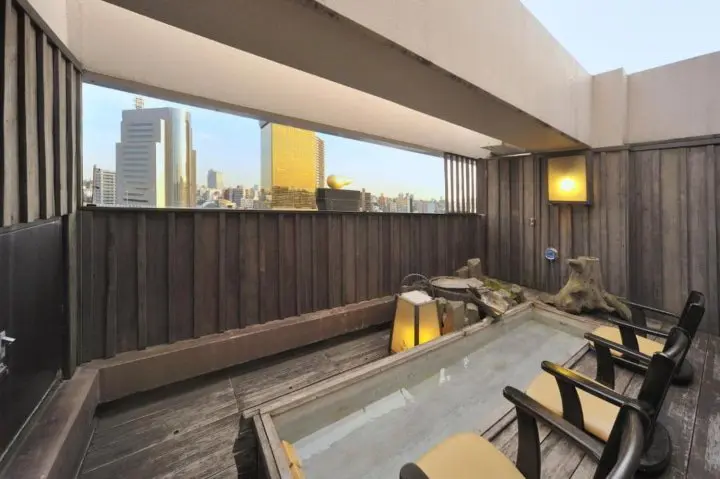
Picture courtesy of Booking.com
The hotel has a large bath on the tenth floor called Asahi-yu, equipped with a sauna. Guests can enjoy the view of Asakusa from the open-air bath. There is also a footbath for those who want to take in the scenery.
Since there are many famous unagi (eel) restaurants in Asakusa, the hotel serves unagi-meshi (broiled eel on rice) for breakfast.
Dormy Inn Global Cabin Asakusa Discount Reservation
Hotels near Dormy Inn / global cabin Asakusa
Be Aware of Public Bath Rules
Overseas visitors can experience the unique Japanese bathing culture at public baths. However, there may be bathing rules and etiquette unknown to them.
Those unfamiliar with the public bathing rules in Japan should look at the articles below.
Drop by a sento after sightseeing and soak up some soothing Japanese culture.
Read also
This article in 2022 is a revised version of the original published on November 7, 2017.
1995年北海道生まれ。銭湯と旅行、映画が好きです。



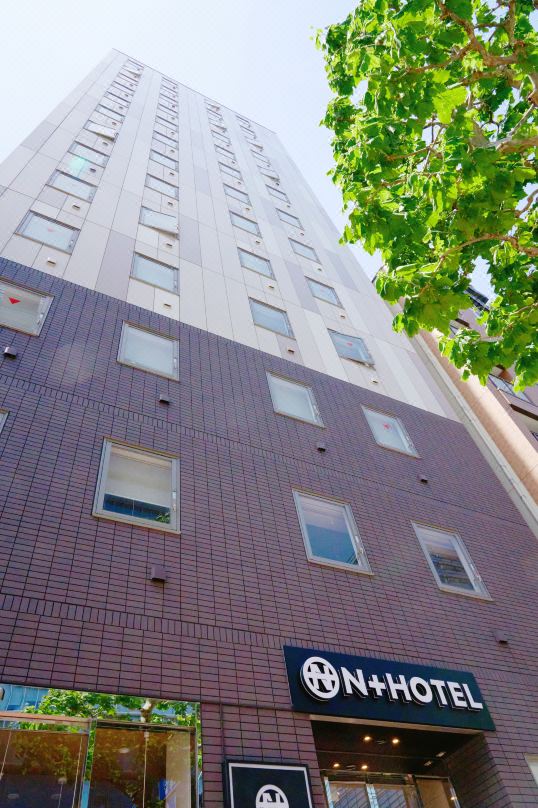

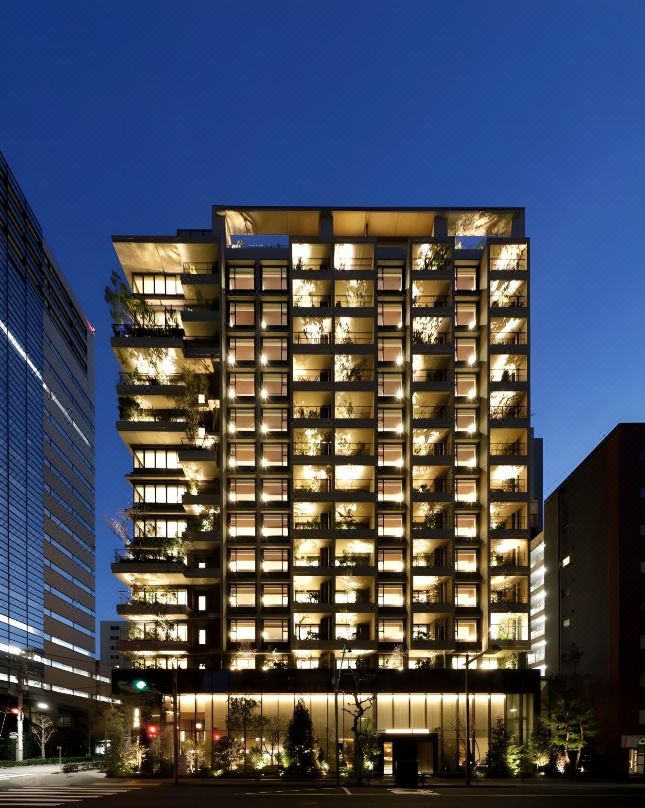
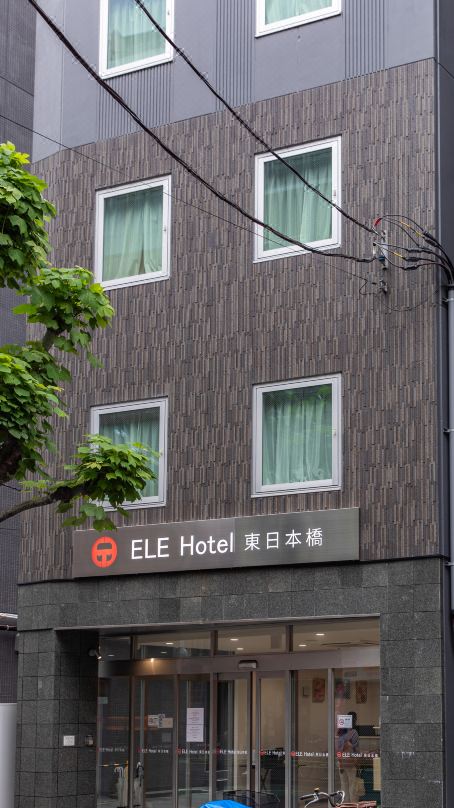


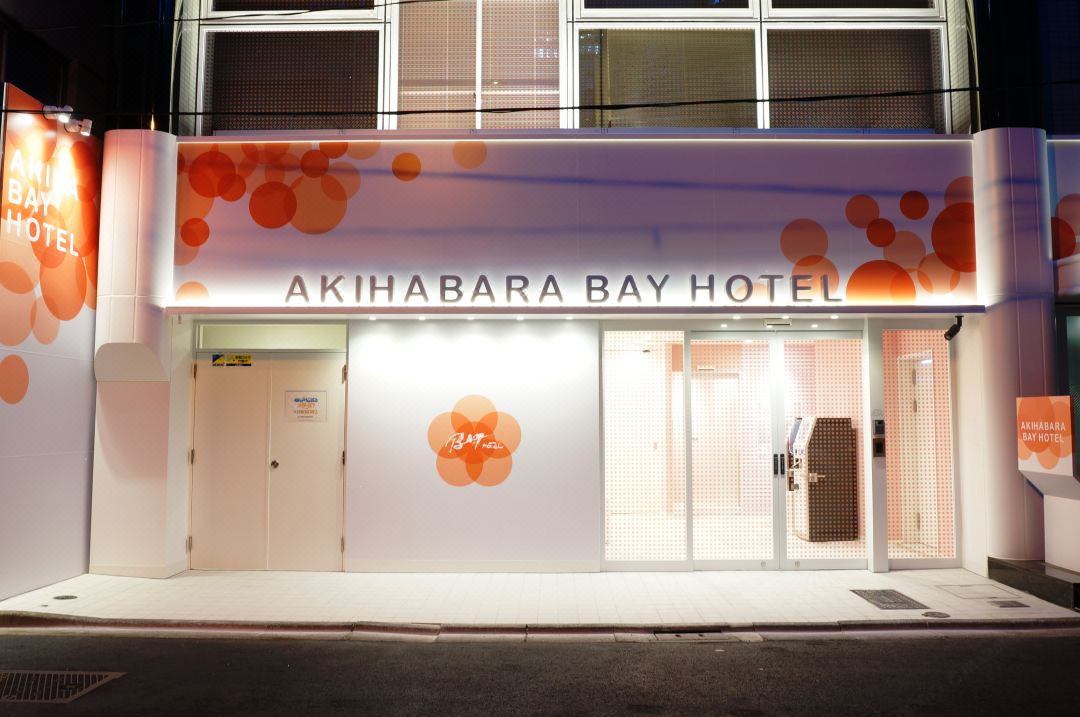
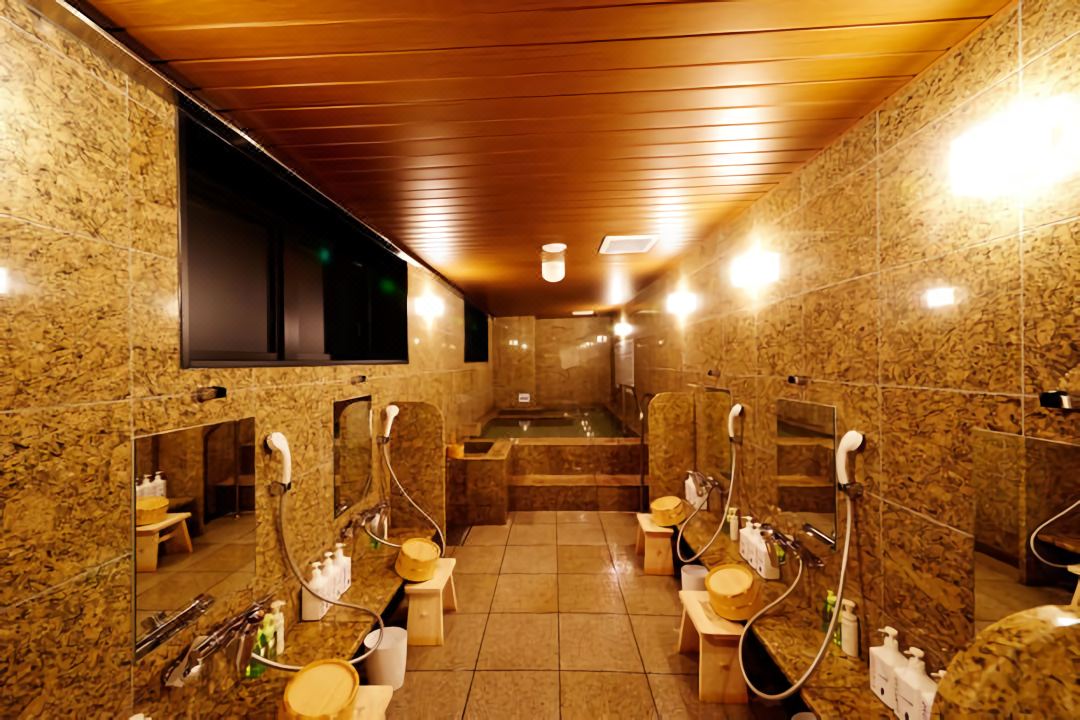


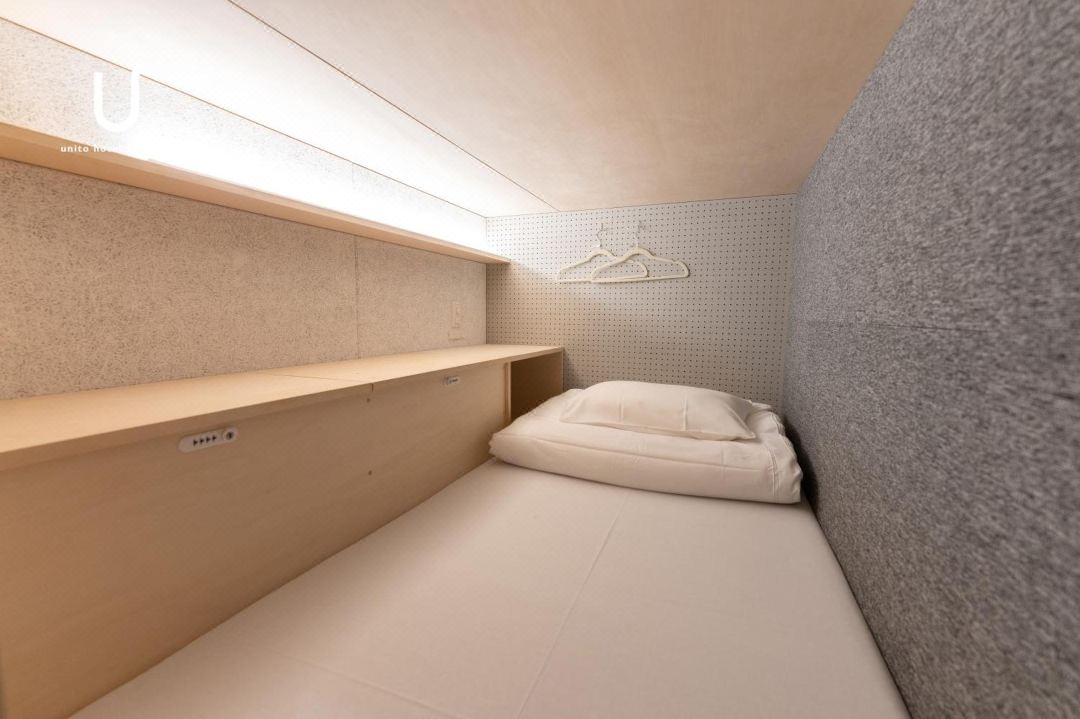
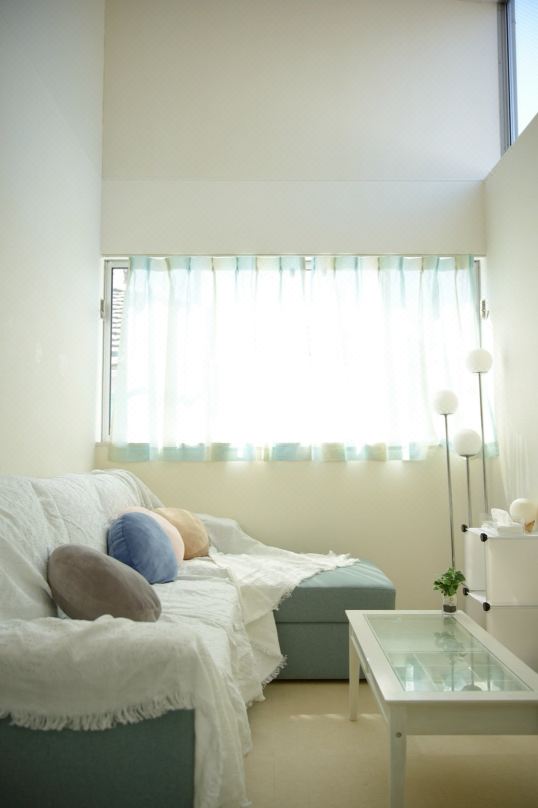










































![[Coupon Available] Attention Overseas Winter Sports Fans! Nagano's Sports Depot Has Evolved](https://resources.matcha-jp.com/resize/720x2000/2026/01/05-254819.webp)
![[2 hours from Tokyo ] 10 Quiet and Breathtaking Views of Mount Fuji in Yamanashi Hokuto City , Yamanashi - Part 2](https://resources.matcha-jp.com/resize/720x2000/2025/12/16-253037.webp)

![[Reopening in March 2026] Ikoma Sanjo Amusement Park Park, 45 minutes from Osaka , with free admission](https://resources.matcha-jp.com/resize/720x2000/2024/08/28-194409.webp)
![[Gunma] 5 recommended gourmet foods at Kawaba Denen Plaza Roadside Station!](https://resources.matcha-jp.com/resize/720x2000/2025/02/26-225970.webp)